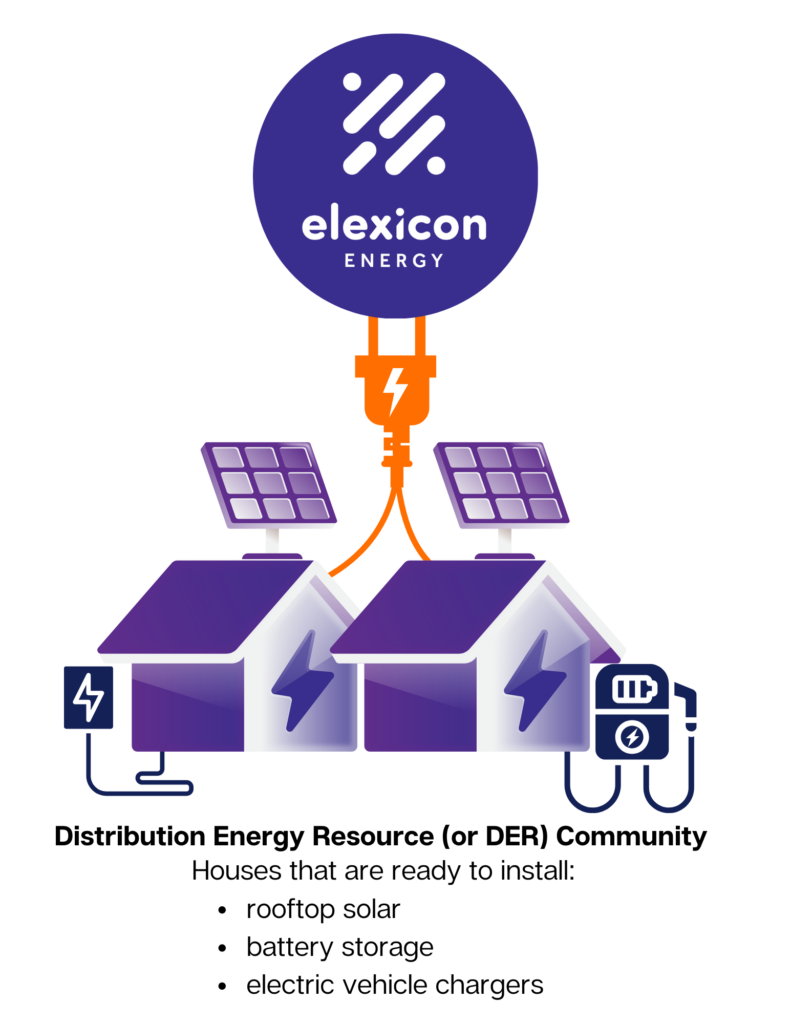Investing for Growth: Exploring a new way of preparing the power grid of tomorrow
Indrani J. Butany, President and CEO at Elexicon Energy Inc., reflects on the realities of increasing electrification in the Western world from the perspective of a local energy company, at the same time that governments set goals to cut carbon emissions. Leading an organization that serves hundreds of thousands of homes and businesses in southern and east central Ontario, Indrani brings a uniquely practical perspective, focusing on delivering electricity to customers.
The Growth Challenge
I remember the days when emission-reduction targets, Electric Vehicles (EVs) and an electrified economy were ideals that seemed so far off into the future that they were surreal. Well, that future is now. I see the demand for electricity accelerating everyday, compounded by housing growth targets, carbon standards, customer preferences and policy development.
For the majority of my career, I have served in Ontario’s distribution sector, where we often refer to ourselves as “the last mile,” or “the face of the energy grid.” It is in this space that aspiration can become reality, or not.
Much like the US states in the rust belt and mid-west, Ontario is always competing for an economic edge. Regardless of the government of the day, we are driven by the attitude that economic prosperity is the foundation for a strong society.
With economic growth comes people, and those people need a place to live. In response to the acute housing shortage in Ontario, the provincial government announced its plan to invest more than $1.8 billion in housing-enabling infrastructure to build at least 1.5 million homes by 2031.
Building new homes increases the demand for electricity. This incremental demand puts pressure on the local grid to deliver more electricity reliably and efficiently. As more homes are built, especially in rapidly urbanizing areas, the distribution system must always stay one step ahead.
“Building new homes increases the demand for electricity. This incremental demand puts pressure on the local grid to deliver more electricity reliably and efficiently”
Indrani J. Butany
Political pressure to build more housing is a pervasive trend gripping policy makers across Canada and the United States. Durham Region, part of the Greater Toronto and Hamilton Area, has available space to build, but as housing grows quickly, it brings new problems early on. These housing starts are challenging society’s ability to electrify and decarbonize.

In order to accommodate growth, utilities must expand their distribution infrastructure to connect new residential areas to the electricity grid. This involves building power lines, transformers, substations, and other equipment to ensure reliable electricity supply to new developments. Infrastructure expansion projects may also include upgrades to accommodate future growth and technological advancements. Investing in our distribution grid must come before anything else.
However, infrastructure investments take time. If we invest soon enough, we can seize an opportunity. If not, we might slow down the economic growth we’ve had for years.
As part of Ontario’s energy goals, developers have been encouraged by customers and policymakers to incorporate renewable energy technologies, such as solar panels, geothermal systems, or energy-efficient building designs. Integrating these renewable energy sources into the distribution system requires coordination with utilities to connect to the grid as required, without causing harm to the grid itself. Educating homeowners about energy-efficient practices, incentive programs, and smart-home technologies can help manage energy demand and support grid reliability.
“Integrating these renewable energy sources into the distribution system requires coordination with utilities to connect to the grid as required, without causing harm to the grid itself”
Indrani J. Butany
Case Study: Durham Housing Development
Since its inception, Elexicon Energy has been constantly seeking to respond to the challenges of our day through innovation. In 2021, our Sustainable Brooklin Project proposed a new approach to distribution system expansion. The project would enable more than 11,000 new homes in a new sub-division community with houses that are ready to install rooftop solar, battery storage and electric vehicle chargers. This project is intended to create a community known as distribution energy resource-enabled (or DER), providing a solid foundation for future conservation opportunities for customers. It will also allow Elexicon to implement energy alternatives in the community (ones that don’t involve overhead or underground wires) for greater resiliency and to defer future infrastructure investment to the benefit of all Elexicon’s customers.

Traditionally, developers in Ontario are required to pay a capital contribution under the rules and codes of our regulator, the Ontario Energy Board (OEB). In this case, Elexicon applied to the OEB to recover the costs of two electrical feeders from all electricity customers in the service territory. The justification being that electrification is a broader socio-economic goal. We challenged the old way of thinking to tackle a new-age problem.
Elexicon’s application to the regulator highlighted the challenges associated with the traditional ‘beneficiary pay’ model, which includes the first-mover disadvantage and the prisoner’s dilemma.
- First-mover disadvantage – When building a new development in an area without a preexisting connection to the electricity grid, the first development must fund the significant electrical infrastructure investment required to connect the community to the grid. While future development would benefit from this infrastructure, the rules require all costs to be borne by the first mover.
- Prisoner’s dilemma – When expansion is already happening, other developers are encouraged to wait. They want the first developers to pay for the infrastructure costs. But those first developers can’t be sure they’ll get paid back when more people connect later. This whole process is out of their hands and the distributor’s hands too.
New Challenges Require New Solutions
The case study described above is the tip of the iceberg. It describes a practical challenge that is a symptom of a systemic issue. The frameworks of the past 100 years are not capable of addressing the challenges we face today. We need to embrace new approaches to enable the results we desire. Our society is much more than a sum of its parts. Our future will be dictated by how we invest for growth today.

















